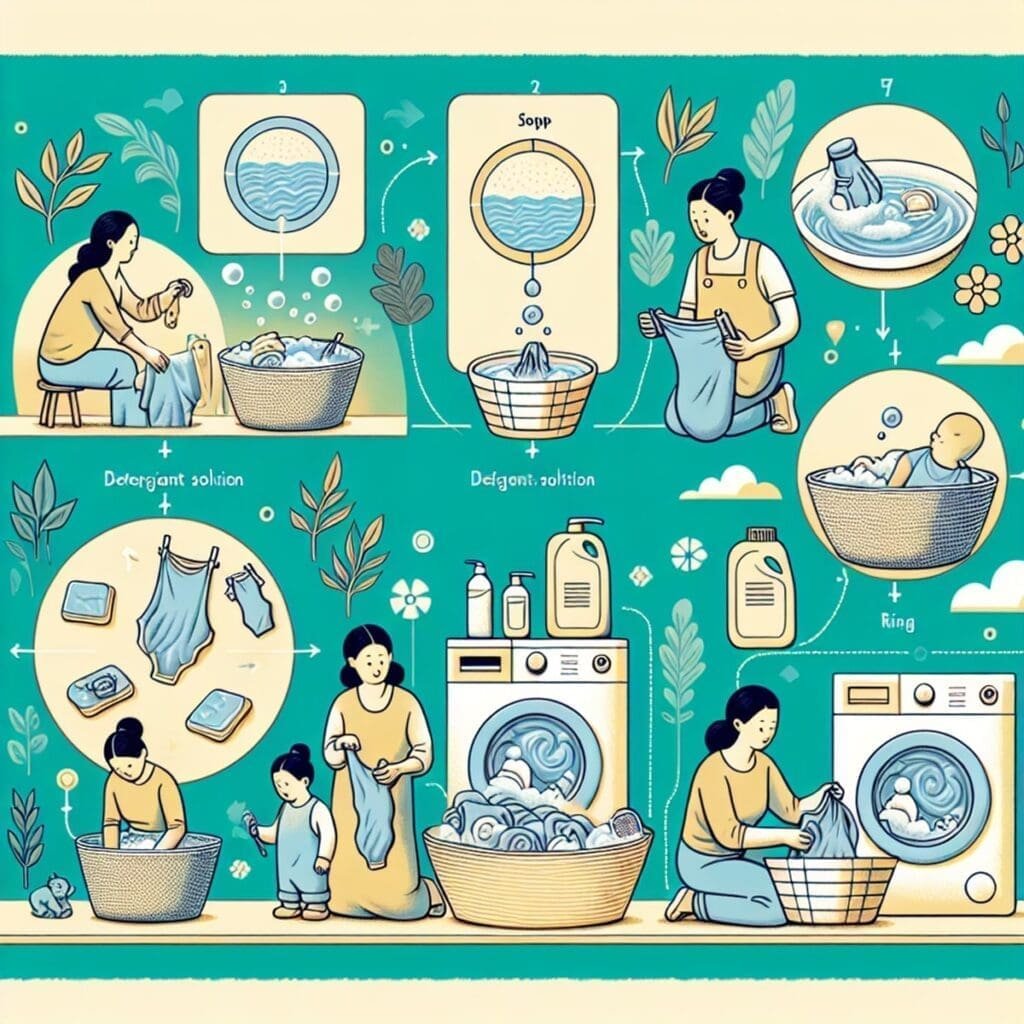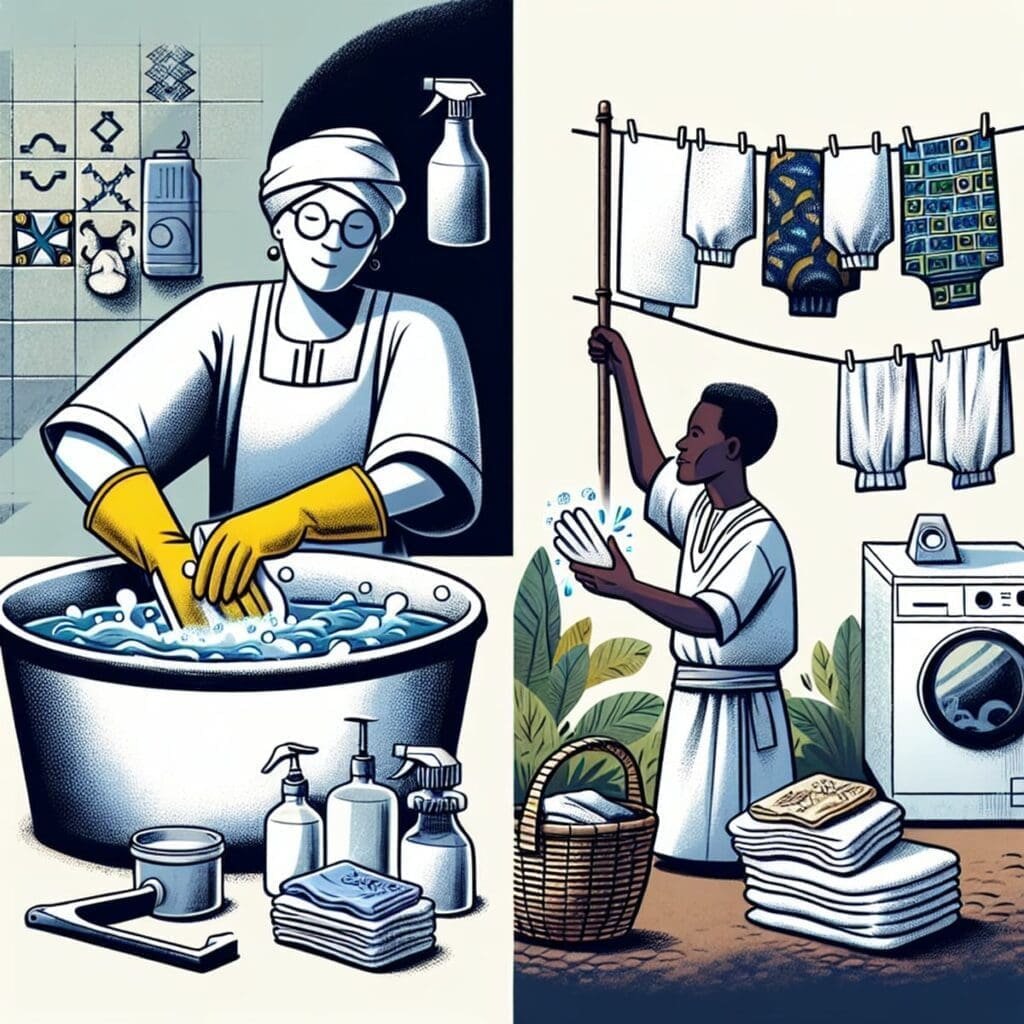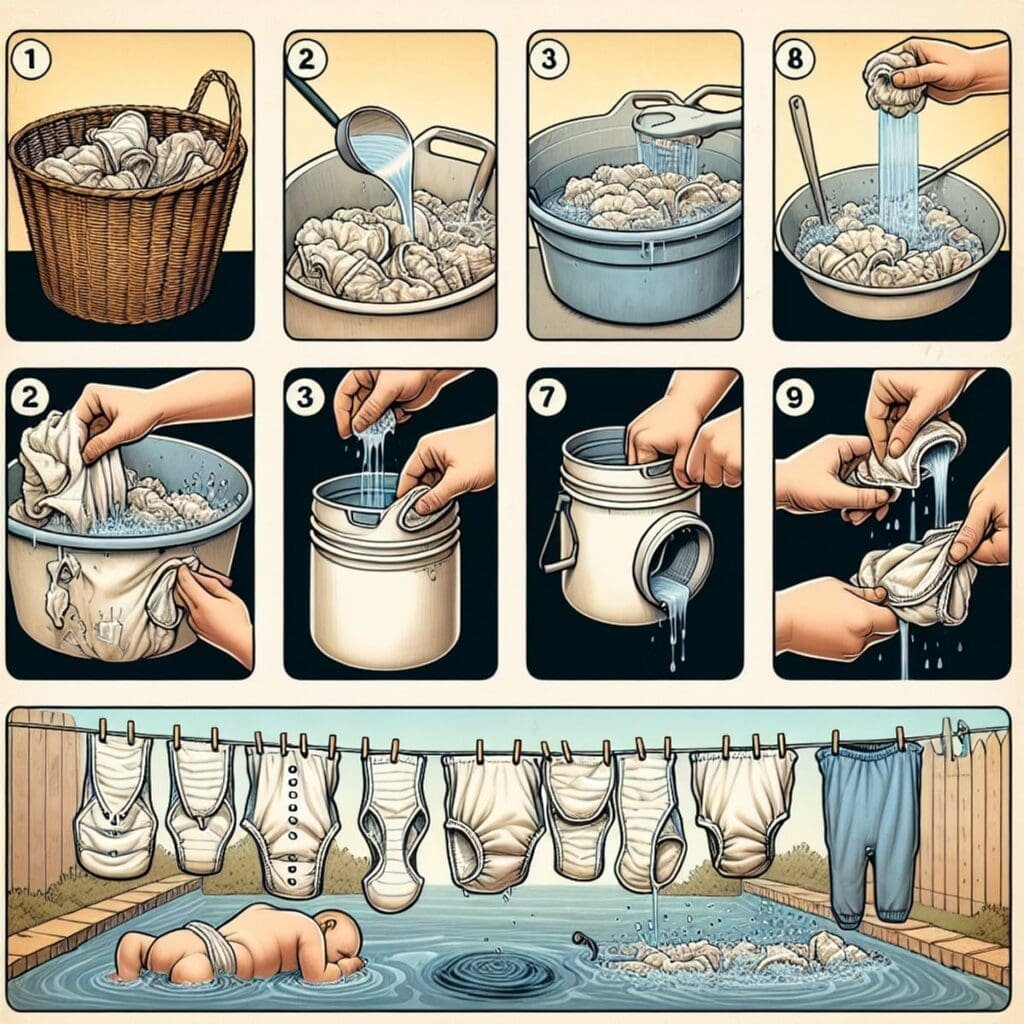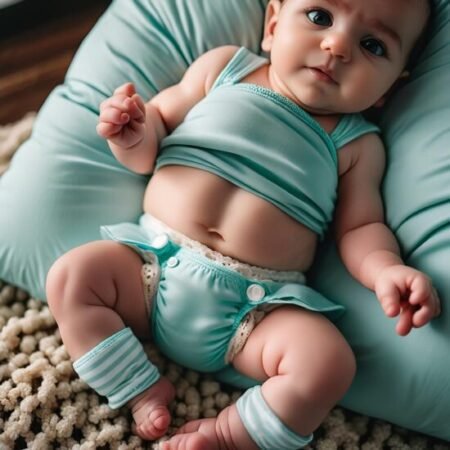
Introduction How to Strip Cloth Diapers
Stripping cloth diapers is crucial for keeping them clean and absorbent. Over time, diapers can build up detergent residue and develop issues like repelling and odors, which can reduce their effectiveness. In this ultimate guide for 2024, we’ll explore various methods and techniques to strip cloth diapers effectively and ensure they work optimally.
In this comprehensive guide, we’ll cover the following essential aspects:
- Understanding the Need for Stripping Cloth Diapers
- Recognizing Signs That Your Cloth Diapers Need Stripping
- Different Methods for Stripping Cloth Diapers
- Essential Tips and Best Practices for Successful Cloth Diaper Stripping
By exploring these areas, you’ll learn how to maintain your cloth diapers properly. Let’s start this journey to equip you with the skills needed for effective cloth diaper maintenance.
1. Understanding the Need for Stripping Cloth Diapers

Proper maintenance of cloth diapers is essential to ensure their longevity and performance. A key aspect of this maintenance is having a thorough washing routine in place. By following a proper washing routine, you can minimize the need for stripping your cloth diapers. Here are some important points to understand about the need for stripping cloth diapers:
Role of a Proper Washing Routine
A regular washing routine is crucial for keeping cloth diapers clean and absorbent. It involves a combination of pre-rinsing, washing, and rinsing cycles to remove urine, feces, and detergent residue from the diapers. A well-executed washing routine helps prevent issues like odor buildup, bacterial growth, and detergent residue accumulation.
Detergent Buildup on Cloth Diapers
One common issue that may necessitate stripping is detergent buildup on cloth diapers. Detergents contain surfactants that help remove dirt and stains from fabric. However, if too much detergent is used or if it isn’t rinsed out properly during the washing process, it can accumulate on the fibers of the diapers. This buildup can lead to several problems:
- Reduced Absorbency: Detergent residue on cloth diapers can create a barrier that prevents them from effectively absorbing moisture. This can result in leaks and discomfort for your baby.
- Skin Irritation: Detergent buildup can cause skin irritation for your baby’s delicate skin. The residual detergent can act as an irritant and lead to rashes or redness.
- Odor Issues: If detergent accumulates on the cloth diapers, it can trap odors from urine or feces, making it difficult to eliminate unpleasant smells even after washing.
To maintain clean and absorbent cloth diapers, it’s important to establish a proper washing routine and ensure that you’re using an appropriate amount of detergent without excessive buildup. However, even with a good routine, some situations may still require you to strip your cloth diapers. In order to minimize the need for stripping, it’s crucial to be aware of the dos and don’ts when washing cloth diapers. In the next section, we will discuss the signs that indicate your cloth diapers may need stripping.
2. Recognizing Signs That Your Cloth Diapers Need Stripping

When it comes to cloth diapering, maintaining a proper washing routine is essential for keeping your diapers clean and absorbent. However, even with the best washing practices, there may come a time when your cloth diapers need stripping. Here are some common indicators that suggest your diapers require stripping:
- Foul Odor: If your cloth diapers have a lingering unpleasant smell even after being washed, it could be a sign that detergent residue or bacteria has built up over time. This can lead to an odor that is difficult to eliminate with regular washing.
- Ammonia Smell: Another indication that your cloth diapers need stripping is the presence of an ammonia smell, especially when your baby’s urine mixes with the diaper. Ammonia buildup can occur due to bacteria growth or detergent residue, and it can cause skin irritation for your little one.
- Diaper Repelling: When cloth diapers are not properly cleaned or have excessive detergent buildup, they may develop repelling issues. This means that instead of absorbing liquid, the diapers repel it, causing leaks and reduced absorbency. If you notice that your diapers are no longer retaining moisture as they should, it’s a sign that you need to strip them.
It’s important to pay attention to these signs and address them promptly to ensure the longevity and performance of your cloth diapers. By recognizing these indicators, you can take the necessary steps to strip your cloth diapers effectively and restore their absorbency and freshness.
Remember, not all cloth diaper issues require stripping. In many cases, getting started with adjusting your wash routine or addressing specific problems like hard water or detergent sensitivity can resolve the issue without resorting to stripping. However, if you’ve tried troubleshooting other potential causes of odor or repelling issues without success, then it might be time to consider stripping your cloth diapers.
3. Different Methods for Stripping Cloth Diapers

When it comes to stripping cloth diapers, there are several methods that you can consider, each with its own set of benefits and potential risks. Here’s a breakdown of the different methods available:
1. Boiling Method:
- Suitability: This method is suitable for natural fibers like cotton and hemp, but it should be avoided for diapers with PUL or TPU covers as the heat can damage these materials.
- Step-by-Step Instructions:Fill a large pot with water and bring it to a boil.
- Once the water is boiling, add the diapers and let them boil for about 10-15 minutes.
- Remove the diapers from the pot and rinse them thoroughly.
2. Soaking Method with Additives:
- Suitability: This method works well for all types of cloth diapers, including those with PUL or TPU covers.
- Step-by-Step Instructions:Fill a large container with hot water and add a stripping agent such as white vinegar, oxygen bleach, or a commercial laundry treatment.
- Place the diapers in the solution and let them soak overnight.
- The next day, rinse the diapers thoroughly to remove any residue.
3. Multiple Hot Water Washes Without Detergent:
- Suitability: This method is suitable for all types of cloth diapers and can be especially effective for tackling detergent buildup.
- Step-by-Step Instructions:Place the diapers in the washing machine and run multiple hot water wash cycles without adding any detergent.
- Ensure thorough rinsing between each cycle to remove any loosened residue.
Using additives during the soaking process can help break down built-up residues and eliminate odor-causing bacteria. However, it’s essential to follow recommended dilution ratios to avoid damaging the fabric or causing skin irritation for your little one.
Each method has its advantages and considerations, so choosing the right one will depend on your specific situation and the type of cloth diapers you have in your rotation.
Essential Tips and Best Practices for Successful Cloth Diaper Stripping

When it comes to keeping your cloth diapers clean and absorbent, having a proper washing routine is crucial. Here are some important tips and best practices for successful cloth diaper stripping:
- Maintain a Consistent Wash Routine: It’s important to have a regular and consistent washing routine for your cloth diapers. This means adjusting the routine as needed based on the water quality and the type of diapers you’re using.
- Understanding Stinky Diapers: There are a few common reasons why cloth diapers can develop a strong odor. These include buildup from detergent residue, ammonia from urine, and bacteria that create a barnyard smell. Addressing these issues effectively is key to keeping your cloth diapers smelling fresh.
- Removing Bacteria: To get rid of the barnyard smell, it’s crucial to focus on eliminating the bacteria that are causing it. This can be done through proper soaking with additives or by using specific stripping methods that target bacteria.
- Preventing Leaks: A successful cloth diaper stripping process can also help prevent leaks, including those caused by compression. By making sure your diapers are thoroughly cleaned and maintained, you can improve their overall performance and reduce the chances of leaks.
By following these essential tips and best practices, you’ll be able to successfully strip your cloth diapers and keep them clean, fresh-smelling, and highly absorbent for your little one.
Conclusion
To ensure the longevity and performance of your cloth diapers, it is crucial to understand when and how to strip them properly. By following the methods and techniques discussed in this article, you can effectively address issues such as detergent buildup, foul odors, ammonia smells, and repelling problems.
Remember these key points as you maintain your cloth diapers:
- Consistent wash routine: Establish a regular washing routine and adjust it as needed based on your water conditions and diaper type. Consistency is key to preventing the need for stripping.
- Immediate rinsing: Rinse your diapers immediately after soiling them to minimize bacteria growth and prevent stains from setting in.
- Avoid fabric softeners: Fabric softeners and detergents with fabric softeners can leave residue on your cloth diapers, reducing their absorbency. It’s best to steer clear of these products to maintain optimal performance.
By following these practices, you can reduce the frequency of stripping cloth diapers and keep them clean and absorbent for your little one. Regular maintenance combined with proper washing techniques will help ensure that your cloth diapers stay fresh and effective.
If you ever encounter persistent issues with your cloth diapers despite following all the necessary care steps, don’t hesitate to reach out for further assistance from knowledgeable resources or communities dedicated to cloth diapering. They can provide valuable insights and guidance tailored to your specific situation.
Happy diapering!
FAQs (Frequently Asked Questions)
What is cloth diaper stripping and why is it important?
Cloth diaper stripping is the process of deep-cleaning cloth diapers to remove buildup and restore their absorbency. It is important to maintain clean and absorbent diapers to prevent issues such as leaks, odors, and irritation for the baby.
What are the common indicators that suggest cloth diapers need stripping?
Common indicators that suggest cloth diapers need stripping include a foul odor after washing, the development of an ammonia smell, or issues with diaper repelling. These signs indicate that the diapers are not as clean or absorbent as they should be.
What are the different methods for stripping cloth diapers?
The different methods for stripping cloth diapers include the boiling method, soaking method with additives, and multiple hot water washes without detergent. Each method has its own step-by-step instructions and suitability for different types of diapers.
What are some essential tips and best practices for successful cloth diaper stripping?
Some essential tips and best practices for successful cloth diaper stripping include maintaining a proper wash routine, considering water pH, troubleshooting stinky diaper problems, removing bacteria that cause barnyard stink, and preventing diaper leaks or compression leaks.
Why is it important to rinse immediately after soiling when maintaining cloth diapers?
It is important to rinse immediately after soiling when maintaining cloth diapers to prevent stains from setting and to minimize odor-causing bacteria. Regular rinsing helps in keeping the diapers clean and fresh for future use.






